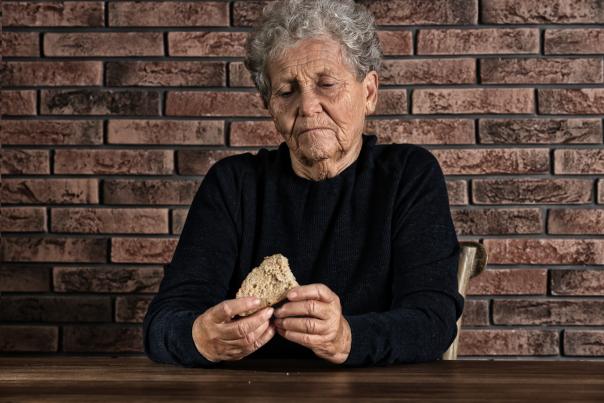
The number of older people diagnosed with malnutrition has more than trebled to almost 500,000 in the past decade, according to figures from NHS Digita
Reported in The Guardian newspaper, the data showed that more than 1m people aged 60 and over – one in ten – are either malnourished or at risk of malnutrition.
But because the vast majority of these people – 93% – live at home, their malnourishment often goes unnoticed.
The independent Malnutrition Task Force have said that Christmas is an ideal opportunity to spot the signs that people might be struggling to eat enough to keep themselves well.
Dianne Jeffrey, the chair of the Malnutrition Task Force, was reported as saying: “It is shocking that 1.3m older people suffer from or are at risk of malnutrition in our country and the root of the problem doesn’t just lie with poverty.
“There are other contributing factors which add to the risk. Public health messages that don’t always relate to this age group; a lack of ability to shop, eat and drink at home without help.
“As well as loneliness and isolation, grief and bereavement, poor physical and mental health or a lack of awareness of the risks by health and social care staff,” she added.
Data from the English Longitudinal Study of Ageing (ELSA) showed various factors are contributing to the rise in diagnoses of malnutrition among older people. These include over 230,000 people aged 75 and over having difficulty with the physicality of eating, such as cutting up food, and above 1.9m having difficulty eating food because of a dental condition.
ELSA collects data from people aged over 50 to understand all aspects of ageing in England. More than 18,000 people have taken part in the study since it started in 2002, with the same people re-interviewed every two years.
Not being able to afford to eat may be another cause of malnutrition, particularly for those older people living in poverty. ELSA’s data shows that over 360,000 people aged 50-64 and over 29,000 of 65-74 year-olds admit having to cut or skip meals because they didn’t have enough money.
Treating someone who is malnourished is two or three more times expensive for the healthcare system than someone who is not malnourished and identifying and addressing the problem could result in significant savings.
Estimates put the cost of malnutrition on health and social care is expected be at around £13bn by 2020 and that figure is estimated to rise further with the rapidly ageing population.
“It is sometimes quite difficult to recognise that you or a loved one is unintentionally losing weight,” added Jeffrey.
“Look out for warning signs like rings being loose and slipping off, clothes looking too big, belts needing to be tightened. Look for dental problems, loose teeth, sore mouth or loose dentures. All will make chewing and swallowing difficult or some may just have a small or general lack of appetite.”